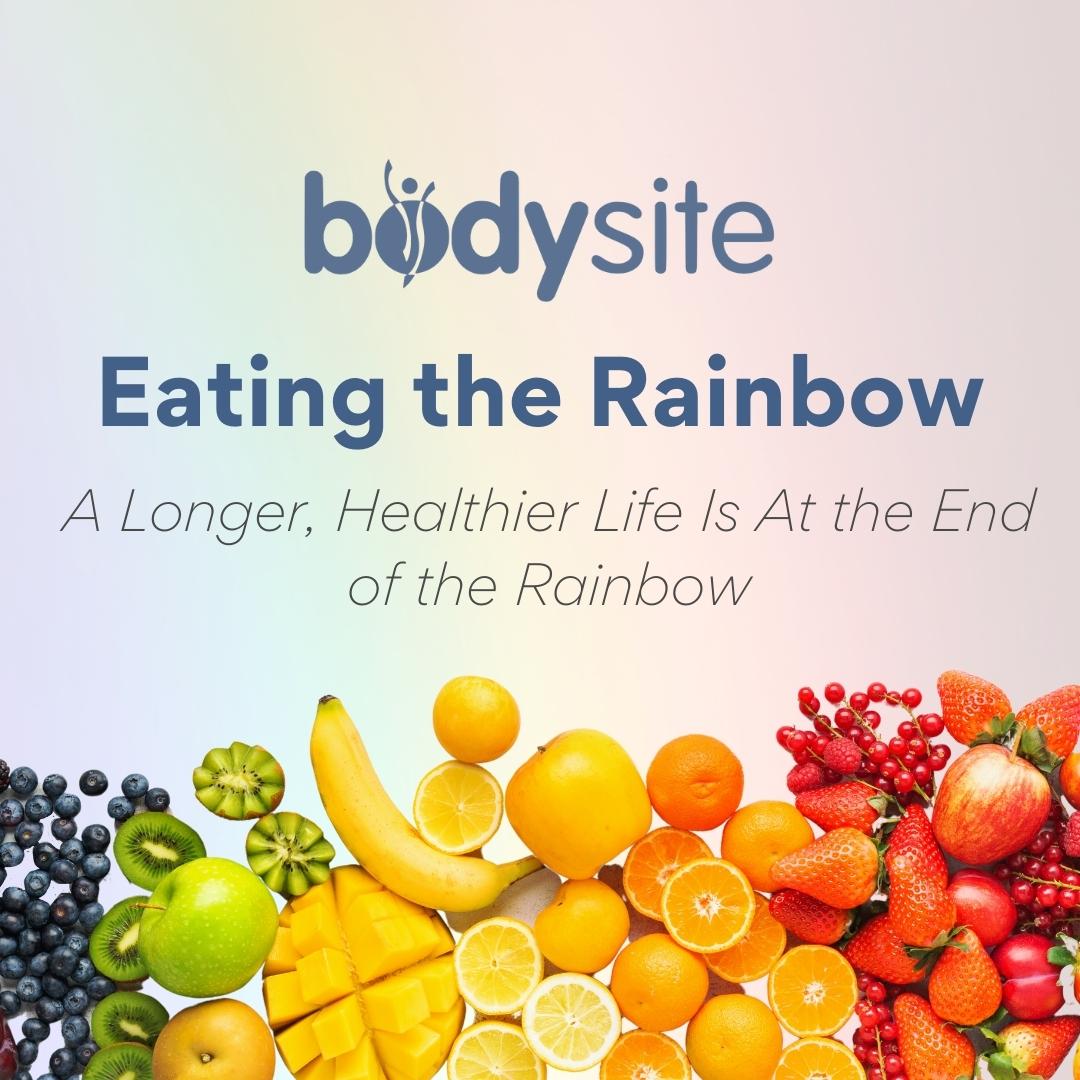Guiding Your Patients on a Rainbow Diet: A Longer, Healthier Life is at the End of the Rainbow

Fruits and vegetables are a great source of vitamins, minerals, and plant chemicals that are extremely beneficial for our health. However, the question remains: are your patients sufficiently ‘eating the rainbow’?
Today’s research shows a strong positive correlation between fruit/vegetable intake and the reduction of chronic diseases such as cancer and cardiovascular disease. Properly incorporating these plant-based colors into your diet are also commonly associated with psychological well-being, which can improve the overall mood and feelings of your patients.
Even though these findings are generally well-known around the world, most adults still do not consume proper amounts of fruits and vegetables. This is known as the phytonutrient gap. It’s very possible that most adults are not aware of their lack of fruit/vegetable intake, so it’s important to keep in contact with your patients regarding their consumption habits in order to ensure they are benefitting from all that fruits and vegetables have to offer.
The Science Behind the Rainbow Diet
Fruits and vegetables are made up of phytonutrients, which are compounds that give the plants their vibrant colors, distinctive tastes, and smells. These compounds also strengthen the immune systems of plants and protect them from diseases. There are many germs, bugs, and fungi along with other threats in the natural environments of plants and phytonutrients are constantly working to protect the plants from those threats.
With all of these benefits that phytonutrients provide for plants, you can only imagine what they can do when consumed by humans. Phytonutrients are cell signaling agents and messengers and have been found to have effects on inflammation, insulin sensitization, and stress response. Modern research has also shown that they have functional and structural capabilities which allows them to play an even bigger role in protecting against diseases.
All the colors of fruits and vegetables contain different phytonutrients with different functions. For example, green plants such as spinach, asparagus, and broccoli are found to have chemicals that work to prevent the actions of carcinogens. On the other hand, orange and yellow plants such as oranges, yellow peppers, and carrots contain chemicals that encourage intracellular communication which can help in preventing heart disease.
These properties of phytonutrients are significant because of the major health benefits these functions provide when consumed by humans. Encouraging your patients to follow the recent US Dietary Guidelines of 2.5 cups of vegetables and 2 cups of fruits per day can greatly benefit their health in the long-run.
The Benefits at the End of the Rainbow
Consuming a sufficient amount of these colorful fruits and vegetables can be the reason that your patient is able to live a longer and healthier life. An epidemiological study found that increased intake of fruits and vegetables are associated with reduced risk of chronic diseases and all-cause mortality.
Unfortunately, the study also found that eight out of ten Americans lack phytonutrients from all colors of fruits and vegetables, with only 9% of Americans meeting the suggested intake of vegetables and 12% of Americans meeting the suggested intake of fruits. These findings have caused public health recommendations to emphasize and increase the suggested intake of fruits and vegetables.
Motivating your patients to maintain a sufficient rainbow diet can open them up to the benefits of phytonutrients and decrease their risk of chronic diseases in the future. Increased intake of fruits and vegetables are also commonly associated with psychological well-being. Research shows a positive correlation between increasing fruit and vegetable intake and happiness, well-being, and overall life satisfaction.
These long-term benefits of sufficiently ‘eating the rainbow’ can greatly increase the well-being and health of your patients. Discussing and encouraging a rainbow diet can show your patients the importance of consuming colorful fruits and vegetables and motivate them to meet their suggested daily intake.
Keeping Track of a Rainbow Diet
Keeping track of the phytochemical index (PI) of patients will also be beneficial in making sure they are consuming a sufficient amount of fruits and vegetables. Phytochemical index is defined as “the percent of dietary calories derived from foods that are rich in phytonutrients”; these foods include fruits, vegetables, juices from fruits/vegetables, legumes, whole grains, nuts, seeds, and soy products.
Tools such as BodySite’s food tracking functionality can help patients to easily track their meals, including custom foods and meals prescribed by you. The best part is you can see all the foods patients track inside of your provider portal, helping you to guide their care while you track their progress.
Provide Patients with a Digital Care Plan Using BodySite
Staying in touch with your patients regarding their intake of colorful fruits and vegetables will be vital to their potentially longer and healthier lives. Three plans that may help patients increase their intake of fruits and vegetables and improve their psychological well-being, respectively are the Plant Based Diet, Vegan Diet and 21 Days of Mindfulness, all powered by BodySite.
BodySite is a HIPAA compliant remote patient care platform that promotes better care and increases practice revenue with over 60+ digital care plan templates, all of which are customizable. Easily enroll patients into care and wellness plans so patients receive your guidance, support, and instructions everyday. When combined with the wide array of patient management features BodySite offers, providers can create better outcomes for patients.
Take advantage of your 30 Day Free Trial of the platform to begin administering a digital care plan to patients today!
SOURCES:
- https://bodysite.com/stress-reduction-optimal-health-mindfulness-power-of-presence/
- https://www.newswise.com/articles/3
- https://www.health.harvard.edu/blog/phytonutrients-paint-your-plate-with-the-colors-of-the-rainbow-2019042516501
- https://www.ncbi.nlm.nih.gov/pmc/articles/PMC7770496/
- https://bodysite.com/the-plant-based-diet-a-focus-on-whole-organic-foods-as-a-way-of-life/
- https://academic.oup.com/ije/article/46/3/1029/3039477?login=false#112546252

